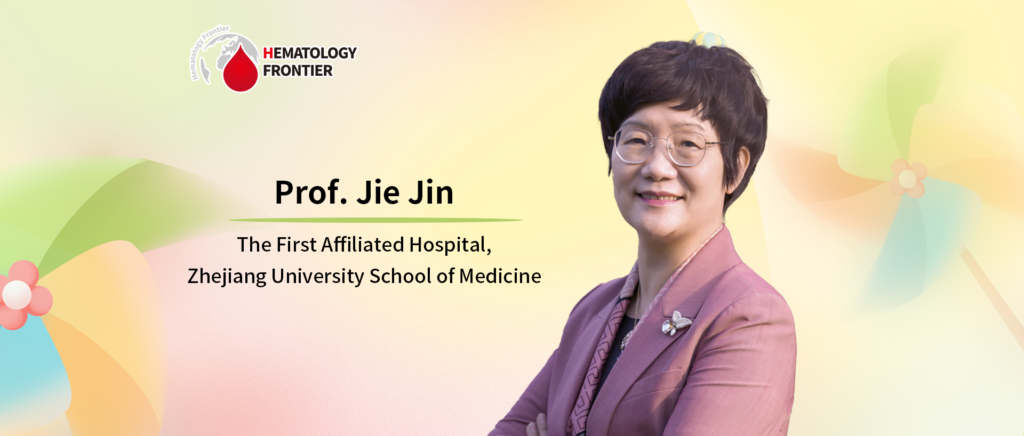
Editor’s Note: From December 9 to 12, 2023, the 65th American Society of Hematology (ASH) Annual Meeting was grandly held in San Diego, USA, in a hybrid format combining online and offline sessions. As one of the largest and most comprehensive international academic conferences in the field of hematology, experts and scholars from around the world gathered to explore the latest frontiers in hematologic diseases, new treatment methods and strategies, and disease management approaches. At this year’s ASH Annual Meeting, Professor Jin Jie and her team from the First Affiliated Hospital of Zhejiang University School of Medicine presented an oral report titled “IL1RAP-Specific T Cell Engager (TCE) Antibody Effectively Clears Leukemia Stem Cells (LSC) in Acute Myeloid Leukemia (AML).” “Tumor Watch” had the privilege of interviewing Professor Jin Jie on-site to discuss the research and its related content.
586 IL1RAP-Specific T Cell Engager (TCE) Antibody Efficiently Depletes Acute Myeloid Leukemia (AML) Leukemic Stem Cells (LSCs)

Expert Commentary
01
“Hematology Frontier”: First, could you please explain the expression of IL1RAP in AML cells and the significance of targeting IL1RAP in treatment?
Professor Jin Jie: IL1RAP is highly expressed in myeloid leukemia, accounting for 80% to 90% of cases. As it is expressed on the surface of AML tumor cells, it serves as an excellent target for antibody therapy.
02
“Hematology Frontier”: At this ASH conference, your team’s study (Abstract No: 586) focused on the dual-specificity antibody BiF002 targeting IL1RAP and CD3, showing significant activity in killing leukemia cells, including leukemia stem cells (LSCs). Could you provide insights into this research?
Professor Jin Jie: Besides high expression in myeloid leukemia, IL1RAP also exhibits elevated expression in leukemia stem cells, which is not present in normal stem cells. Therefore, antibodies based on IL1RAP can precisely target leukemia stem cells without affecting normal cells, unlike CD123 and CLL-1, which may have limited expression in normal stem cells. Through leukemia mouse models, especially patient-derived xenograft (PDX) models, we observed high expression of IL1RAP in leukemia stem cells. After antibody treatment, these stem cells were effectively eliminated. This indicates that IL1RAP has a significant advantage in targeting leukemia stem cells, making it a promising candidate for antibody or CAR-T therapy.
03
“Hematology Frontier”: Finally, what are your thoughts on the therapeutic efficacy and prospects of Chimeric Antigen Receptor T cells (CAR-T) targeting IL1RAP for AML? Could you discuss this in the context of related research?
Professor Jin Jie: We anticipate that IL1RAP will be a favorable CAR-T target because of its effective clearance of leukemia stem cells with minimal damage to normal stem cells, resulting in fewer side effects and off-target effects. We are currently conducting further research in this direction. In the future, we can develop dual-target antibodies by combining IL1RAP with CD3, providing an excellent immunotherapy for myeloid leukemia. Additionally, CAR-T therapy targeting IL1RAP holds great promise, especially in the context of relapsed or refractory leukemia, offering significant application prospects.


ASH 2023

Professor Jie Jin
Doctor of Medicine, Professor, Ph.D. Supervisor
Recipient of the Special Government Allowance from the State Council, Advanced Worker in the National Health System
Honorary Director of the Hematology Department, First Affiliated Hospital, Zhejiang University School of Medicine
Director of the Key Laboratory of Hematologic Malignancies (Diagnosis and Treatment), Zhejiang University
Leader of the Clinical Key Discipline of Hematology at Zhejiang University Hospital, National Health Commission
Director of the Clinical Medical Research Center for Hematologic Diseases in Zhejiang Province
Principal Investigator of Malignant Hematologic Diseases in the Cancer Research Institute, Zhejiang University
Leader of the Key Innovation Team in Leukemia Basic and Clinical Research in Zhejiang Province
Chairwoman of the Hematology Branch of the Chinese Medical Women’s Association
Former Chairwoman of the Hematologic Disease Translational Medicine Committee, Anti-Cancer Association
Executive Committee Member of the Hematology Society, Chinese Medical Association
Vice Executive Committee Member of the Integrated Hematology Society, Chinese Medical Association
Vice Executive Committee Member of the CSCO Anti-Leukemia Alliance
Executive Committee Member of the CSCO Anti-Lymphoma Alliance
Executive Committee Member of the Cross-Strait Hematology Society
Executive Committee Member of the Hematology Society, Chinese Health Promotion Association
Former Chairwoman of the Hematology Branch, Zhejiang Medical Association
President of the Hematology Branch, Zhejiang Provincial Medical Doctor Association
Published over 280 academic papers in SCI-indexed journals such as Lancet Oncology, Cell, Blood, Leukemia, and JHO. As the first awardee, received one National Science and Technology Progress Second Prize and two Zhejiang Provincial Science and Technology Progress First Prizes.


